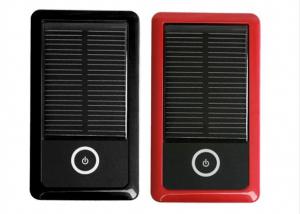Portable Solar Inverter
Portable Solar Inverter Related Searches
Galvanized Steel Planter Box Stainless Steel Ruger Mini 14 Husky Stainless Steel Tool Box Tool Box Stainless Steel Stainless Steel Tool Box Stainless Steel Bread Box Stainless Steel Litter Box Stainless Steel Junction Box Stainless Steel Box Stainless Steel Safety RazorHot Searches
Stainless Steel Supply Near Me Steel Girder Cost Stainless Steel Tubing Near Me Stainless Steel Welder Near Me Stainless Steel Shop Near Me Stainless Steel Welders Near Me ppr pipe manufacturers in saudi arabia ppr pipe price philippines Wholesale UPVC Pipe Price Philippines ppr pipes price list philippines Buy Sheet Plastic polypropylene pipe specifications White Plastic Folding Chairs Wholesale Black Plastic Plant Pots Wholesale ppr type 3 Plastic Flower Buckets Wholesale Wholesale Plastic Folding Chairs Wholesale Plastic Hanging Baskets Plastic Planter Liners Wholesale Portable Led Signs For SalePortable Solar Inverter Supplier & Manufacturer from China
Okorder.com is a professional Portable Solar Inverter supplier & manufacturer, offers integrated one-stop services including real-time quoting and online cargo tracking. We are funded by CNBM Group, a Fortune 500 enterprise and the largest Portable Solar Inverter firm in China.Hot Products
FAQ
- One advantage of using a transformerless solar inverter is increased efficiency. Transformerless inverters have a higher efficiency rating compared to inverters with transformers, which means more of the solar energy is converted into usable electricity. Additionally, transformerless inverters are lighter and more compact, making them easier to install and transport. They also tend to have a longer lifespan and require less maintenance compared to inverters with transformers.
- The role of a solar inverter in preventing electrical faults is to convert the direct current (DC) electricity generated by solar panels into alternating current (AC) electricity that can be used in homes and businesses. In doing so, the inverter helps maintain a stable and consistent flow of electricity, which reduces the risk of electrical faults such as short circuits, overloads, or voltage fluctuations. It also includes various protection mechanisms, such as ground fault detection and interruption, to ensure the safety and reliability of the solar power system.
- Yes, a solar inverter typically requires a separate grounding system. This is because the solar panels generate direct current (DC) electricity, which needs to be converted into alternating current (AC) electricity by the inverter. The AC electricity is then fed into the electrical grid or used within the building. Grounding is an essential safety measure to protect against electrical faults and ensure proper functioning of the system. In a solar power system, the grounding system provides a path for electrical current to safely flow to the ground in the event of a fault, such as a short circuit or lightning strike. A separate grounding system for the solar inverter is necessary to prevent electrical shock hazards and to comply with electrical safety codes and standards. It helps to protect the equipment, the building, and the people using or working on the system. The specific grounding requirements for a solar inverter may vary based on local electrical codes and regulations. It is important to consult with a qualified electrician or solar installer to ensure that the grounding system is correctly designed and installed for optimal safety and performance.
- A solar inverter is designed to handle different temperature conditions by incorporating various protective measures. It typically includes temperature sensors and cooling systems to monitor and regulate its internal temperature. Additionally, it may have heat sinks or fans to dissipate excess heat generated during operation. These features ensure that the inverter operates within its optimal temperature range, maximizing efficiency and protecting it from potential damage caused by extreme temperature variations.
- A solar inverter handles voltage sag or drop in the grid by continuously monitoring the grid voltage. When it detects a voltage sag or drop, the inverter quickly adjusts its output voltage to compensate for the fluctuation, ensuring a stable and consistent power supply. This is achieved by utilizing the inverter's control algorithms and power electronics to regulate the output voltage and maintain grid compatibility.
- A solar inverter handles voltage sag and swell by continuously monitoring the input voltage from the solar panels and adjusting its output voltage accordingly. In the case of voltage sag, when the input voltage drops below a certain threshold, the inverter boosts the voltage to maintain a stable output. Similarly, in the case of voltage swell, when the input voltage exceeds a certain limit, the inverter reduces the voltage to prevent any damage to the connected devices. This process ensures that the solar inverter consistently provides a steady and safe electrical supply.
- To calculate the maximum power point current for a solar inverter, you need to determine the optimal operating voltage and current at which the solar panel can produce the maximum power. This can be done by using a technique known as the perturb and observe (P&O) algorithm. The P&O algorithm continuously adjusts the operating point of the solar panel by slightly perturbing the voltage and observing the resulting change in power. By tracking the voltage and current values that yield the highest power output, you can calculate the maximum power point current for the solar inverter.
- During fault conditions, a solar inverter typically handles voltage regulation by implementing various protective mechanisms. These mechanisms can include rapid shut-off of the inverter to disconnect the solar panels from the grid, as well as the activation of voltage control functions to stabilize the output voltage within specified limits. Additionally, some inverters may have built-in features like dynamic voltage support or reactive power injection to help regulate voltage during fault conditions and ensure grid stability.















































